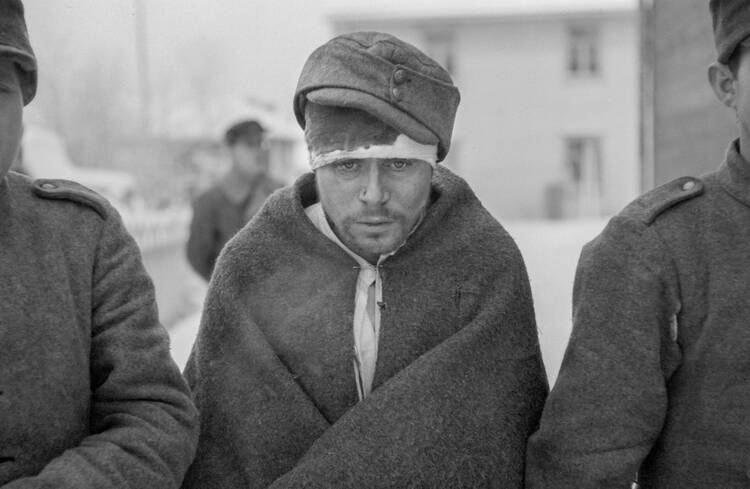My plane landed at Idlewild International Air-port, at 6:55 A.M. in the gray dawn of October 12, 1963. All during the long flight from Moscow, I had wondered what it would be like to see the United States again after 24 years in the Soviet Union, mostly in Siberia. Yet, as we taxied to the terminal, I forgot all about that; I could think only of my sisters and of the fellow Jesuits I saw waiting to meet me. My throat seemed somehow to grow suddenly tighter; I felt a nervous happiness in the expectancy of that first meeting. I hardly remember much about Idlewild, therefore, except flashing lights in the early dawn, the crowd of reporters and that feeling of joy at being home. It was a long while before I could even begin to sift out my impressions of things here.
Cars, of course. Everybody asks about that, and it’s true. You notice them immediately. Moscow streets are busy, but here the streets are crammed with cars—north, south, east and west—cars coming, cars going and block after block of cars standing along the curbs. Not just in the cities, but along the country roads and in small towns, the main streets and the side streets and the alleys seem almost carpeted with cars.
Housing, of course, impressed me tremendously. I don’t mean the skyscraper skyline of New York and the block on block of soaring glass, steel and aluminum towers that loom over you as you walk through the city. Everyone expects that of New York. What struck me, however, was the mile after mile of neat, well-painted and well-kept houses: the big, comfortable farmhouses in the countryside, the trim, sharp rows of “modern” brick and glass homes in every suburb, the solid, sturdy brick houses with their frame front porches in every little town.
Moscow streets are busy, but here the streets are crammed with cars—north, south, east and west—cars coming, cars going and block after block of cars standing along the curbs.
Sometimes I still feel uneasy when I visit these homes. The idea that one family should occupy six, seven or eight rooms! I can’t shake the feeling that something is wrong…a house that had four rooms was a luxury in Siberia, and even then the “spare” room was usually rented out. I lived in such spare rooms all through my stay in Abakan, sleeping on a little iron bed with boards in place of springs....
Here in America, I’ve watched mothers in the kitchen after a meal throw away more food, and better food, than I might eat in Russia in half a week. The dogs here eat more meat in a week than I did in a month. And I simply can’t help staring when people leave their plates half full, as they do often in restaurants....
When I say things like this, of course, I am only recounting my impressions, not offering criticisms. Somewhat like a Siberian Rip Van Winkle, I can’t help being struck by things in my own country that seem strange and new to me…I don’t pretend to judge life in the Soviet Union as compared to life in the United States, or vice versa. I am only recording my surface impressions, the things that struck me when I first returned and continue to startle me from time to time in many little ways....
Just a few weeks ago, for instance, I was struck by the sight of a crucifix on the classroom wall as I talked to the children in St. Ladislaus parish school in Philadelphia. You never see that in Russia. Somehow I suddenly felt strange; I almost felt out of place. I could see in the children’s eyes an eagerness and a respect for what I was (not who I was), a priest whom they called “Father.” I thought of the Russian children who used to come to me for help with their English lessons. How cautious I had to be with them never to mention God! Here in this classroom, beneath this crucifix, I could tell these children anything, speak to them of anything....
I am an American, happy to be home; but in many ways I am almost a stranger, as you can tell by these initial reactions to America. It may take me a while to feel at home, but I am happy to be back. What sort of picture, though, must others have of us who have no way of finding out the truth?
Read the original, unabridged version of Fr. Ciszeks article.








